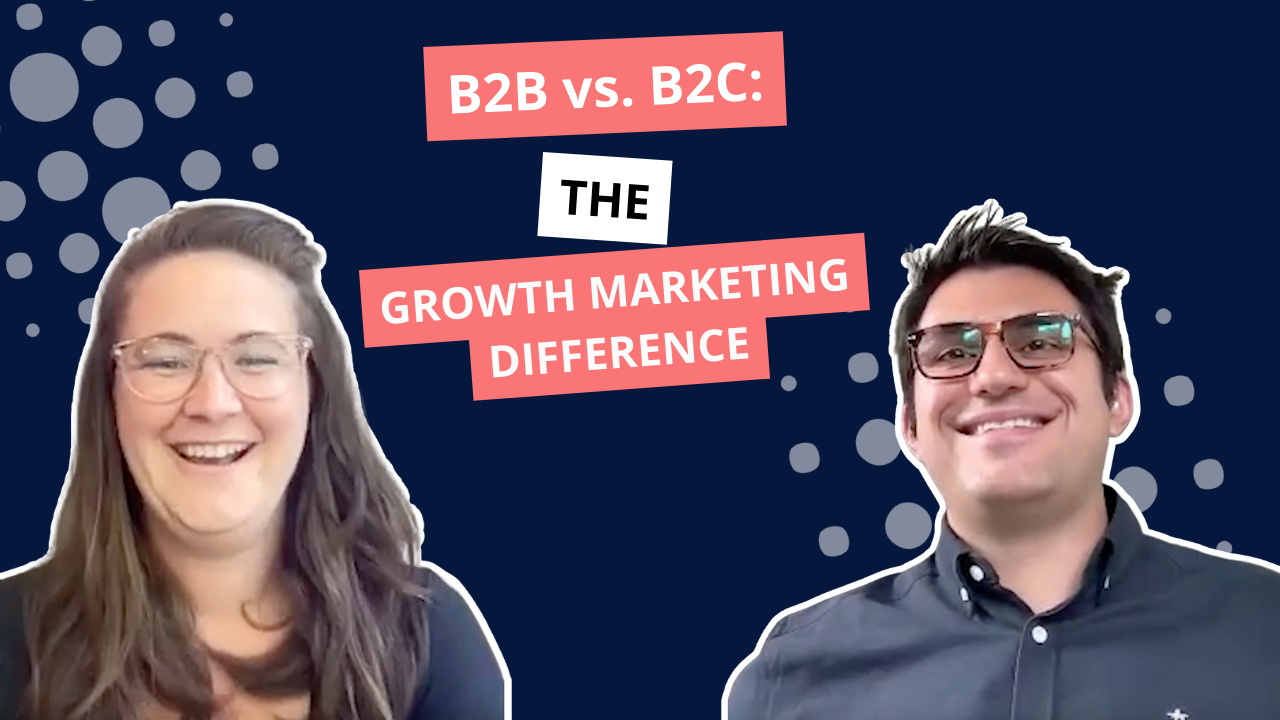Ever feel like your funnels have holes in them? You generate high-quality leads, but they seem to get lost in the middle of the funnel – and it becomes difficult to figure out exactly what’s required to move the lead further down the funnel.
If that sounds familiar, your company needs to start using HubSpot Lifecycle Stages: a value system that allows you to easily track leads’ behavior and progress throughout the buyer journey – helping you avoid confusion, reduce waste and eliminate that “funnel leakage.”
Content:- HubSpot Lifecycle Stages: An Overview
- Understanding the Eight Core Lifecycle Stages
- 3 Ways to Improve Your Lifecycle Stages
- Map Your Funnels in HubSpot with ProperExpression
Proven Tips for Faster Growth
1-Minute Tips from B2B Experts Delivered Straight to Your Inbox
HubSpot Lifecycle Stages: An Overview
What Are HubSpot Lifecycle Stages?
HubSpot Lifecycle Stages are designed to categorize contacts and companies based on their position within your sales and marketing funnels. There are eight main stages that HubSpot has by default: Subscriber, Lead, MQL, SQL, Opportunity, Customer, Evangelist and Other. However, these can be customized to fit your organization’s unique needs.
Why Are They Important?
Lifecycle stages provide a structured framework to track how a contact’s level of engagement with your company evolves. This produces multiple benefits:
- Improve Collaboration: Lifecycle stages ensure all marketers and salespeople understand where the lead is in your funnel. They provide clear, objective definitions that remove ambiguity and enable more effective communication between individuals and departments.
- Tailored Communications: From the specific pain points you target to the frequency of messages you send, lifecycle stages help you calibrate communication to avoid scaring prospects off – and ensure the engagement ramps up naturally over time.
- Resource Efficiency: Your marketing and sales teams have limited time and resources. Lifecycle stages help them allocate their effort to contacts that will help them hit their KPIs and achieve their strategic goals.
Ultimately, lifecycle stages help businesses drive higher conversion rates, shorten sales cycles, and build lasting customer relationships.
Understanding the Eight Core Lifecycle Stages
1. Subscriber
Subscribers are individuals who have shown initial interest in your brand by opting into communications, such as newsletters, blog updates, or other email campaigns. Every contact should go through this phase, even if they have shown immediate interest, as it helps to map your funnel more accurately and consistently.
ProperExpression Tips
Don’t: Use the term “Prospect” to mean Subscriber. This implies the contact has expressed an active interest in your offering and creates confusion – because the Subscriber stage exists precisely because you don’t yet know the contact’s intent.
Do: Create a clear and objective definition for the stage. For example, we consider any contact with less than 100 lead scoring points a Subscriber.
2. Lead
When a contact expresses initial interest in your business—such as by filling out a form, downloading a resource, or engaging with your website—they transition to the Lead stage. This marks the beginning of a relationship and the opportunity to nurture them with valuable content that aligns with their interests and needs.
ProperExpression Tips
Don’t: Overwhelm Leads with too many sales-heavy communications too soon. Avoid sending them irrelevant or high-pressure messages that may deter further engagement.
Do: Provide Leads with educational and value-driven content tailored to their interests, such as blog posts, whitepapers, or case studies. Use nurture campaigns to build trust and guide them toward becoming Marketing Qualified Leads (MQLs).
3. Marketing Qualified Lead (MQL)
MQLs are leads that are deemed ready to be handed off to sales. This is generally determined using a lead scoring system, which considers two basic factors:
- Behavior: The lead showed active interest in your business. They may have downloaded an eBook, attended a webinar, or filled out a form.
- Contact Information: Demographic and firmographic data. Leads whose job title or company type and size are deemed a good fit will be given more “points.”
ProperExpression Tips
Don’t: Rely exclusively on lead scoring to move Subscribers into the MQL stage. Be more discerning and ensure someone from marketing has actively evaluated the contact.
Do: Create automated nurture campaigns with a Bottom-of-the-funnel (BOFU) offer to trigger as soon as a contact becomes an MQL. This will help to build on the momentum you’ve established and move the lead through your funnel faster.
Alternatively, companies with lower lead volume may choose to enroll MQLs into a sales sequence for personalized outreach – helping to build a closer relationship faster.
4. Sales Qualified Lead (SQL)
SQLs are leads that the sales team has vetted and confirmed as potential customers. This stage often involves direct conversations to better understand the lead’s challenges, budget, and decision-making timeline.
ProperExpression Tips
Don’t: Treat all SQLs as the same. For example, we used two categories – SQL Contacting and SQL Scheduled – to help track the funnel at a more granular level.
Do: Approach SQLs with personalized outreach, using the insights gathered during the marketing phase to establish trust and build confidence in your solution.

5. Opportunity
Opportunities are contacts or companies actively engaged in the sales process, typically associated with an open deal. At this stage, the focus shifts to demonstrating the value of your product or service through customized proposals, case studies, or even product trials.
Opportunities represent a pivotal phase where sales strategies should aim to address objections and move the deal closer to closure.
ProperExpression Tips
Don’t: Give deal stages complicated or unclear names. It should be immediately obvious what each stage means and the action it requires. For example, a deal stage called “Demo” is ambiguous and can cause confusion, whereas “Demo Scheduled” makes clear exactly what has occurred – and what the next step should be.
Do: Break the Opportunity stage into multiple deal stages to track your progress. These should be tailored to the specific product or service you are selling and your overall sales cycle.
6. Customer
When a contact or company successfully completes a deal, it transitions to the Customer stage. This is not the end of the journey but the start of a new phase. Retention strategies, onboarding processes, and continued engagement are critical to ensuring satisfaction and reducing churn.
ProperExpression Tips
Don’t: Include Customers in campaigns that may clutter their inbox, such as discounts they are not eligible for. Instead, add them to email suppression lists.
Do: Send Customers nurture campaigns that are relevant to them, as this will help increase loyalty and lifetime value (LTV).
7. Evangelist
Evangelists are customers or partners that serve as loyal advocates for your brand. They actively promote your business, sharing their positive experiences and helping to drive new leads through referrals and testimonials. This stage emphasizes fostering relationships and recognizing their contributions to your growth.
ProperExpression Tips
Don’t: Neglect the importance of rewarding and recognizing Evangelists. Avoid treating them like standard customers or missing opportunities to show appreciation for their advocacy.
Do: Create tailored programs to celebrate Evangelists, such as referral incentives, exclusive content, or loyalty rewards. Keep them engaged by inviting them to participate in case studies, testimonials, or special events.
8. Other
Contacts that don’t fit the predefined lifecycle stages are categorized under the Other stage. These may include vendors, partners, or internal team members who are integral to your operations but are not leads or customers. The focus here is on maintaining professional relationships and ensuring these contacts receive relevant communication.
ProperExpression Tips
Don’t: Overlook these contacts by sending them generic marketing campaigns that are irrelevant to their role or relationship with your business.
Do: Segment this audience carefully and create communications specific to their role, such as updates about partnership opportunities, vendor resources, or internal news. Tailored messaging reinforces their importance to your organization.
3 Ways to Improve Your Lifecycle Stages
The above stages are HubSpot’s default stages – and most companies get by fine with them. But our experience has found performance is dramatically improved when you use three extra Lifecycle stages to map your funnel with greater granularity:
1. Recycled
Recycled leads are no longer moving through your funnel but are still deemed worth nurturing. For example, many industries have fixed purchasing periods and cannot make a purchase for most of the year. But it’s still worth engaging with them and building a relationship that could lead to a deal in the future.
2. Disqualified
A Disqualified lead has been deemed unsuitable for your company or not worth pursuing. They might have expressed active disinterest in your offering or may simply be a bad fit due to financial or cultural factors. It’s important to keep these contacts in your database, because they might end up being added again in the future – and you need to know they are already disqualified.
ProperExpression Tip
Turn all Disqualified leads into non-marketing contacts immediately. This ensures they don’t contribute to your marketing contact limits – which can lead you to incur unnecessary extra costs.

3. Churned
A Churned customer has stopped purchasing your products or services. They can still be nurtured, but there should be a clear distinction between them and new leads because they will need very different messaging frameworks.
Map Your Funnels in HubSpot with ProperExpression
Lifecycle stages can have a shocking impact on your sales and marketing efforts, helping increase the efficiencies and effectiveness of both departments. But do you really want to learn everything from scratch?
ProperExpression has helped over 50 B2B companies use HubSpot to map their funnels and drive measurable increases in revenue and ROI. We have tested a range of strategies and learned a range of vital best practices that drive reliable benefits.
Want to learn how they could help your company grow?








